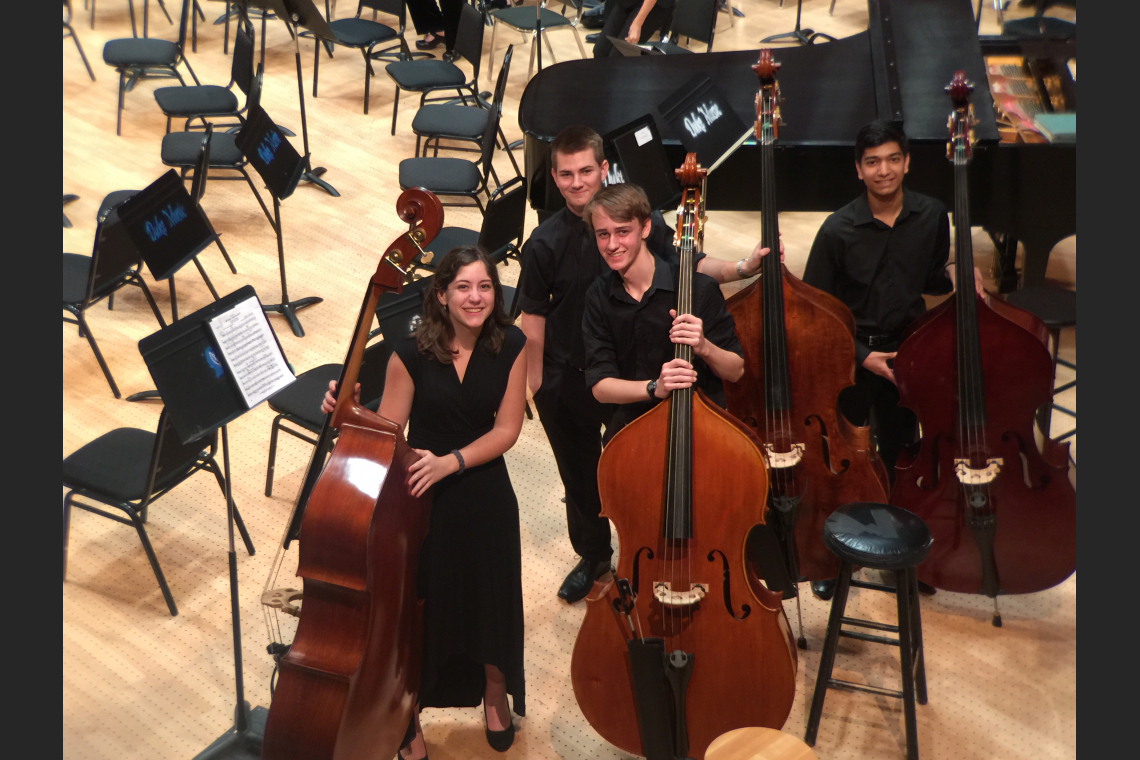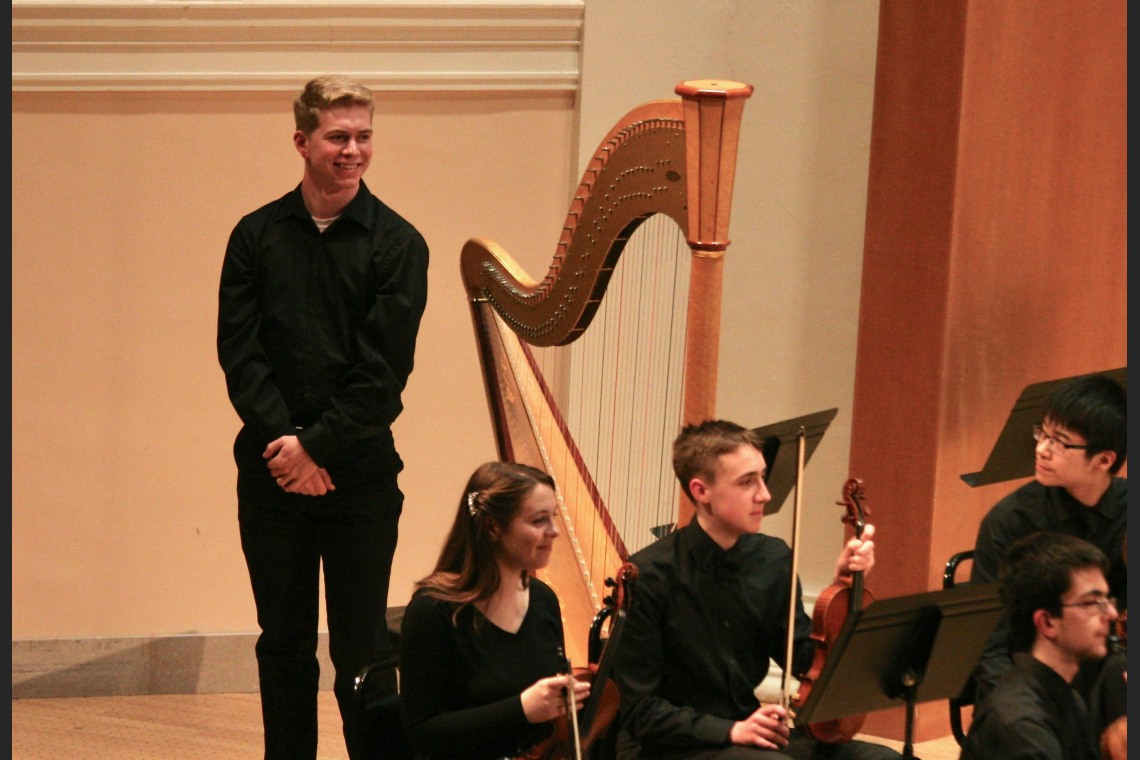YS
Students generally spend more than one year in each ensemble. We welcome students taking lessons through the Duke University String School and students taking private lessons in the local community to participate in the DUSS String Orchestras.
The Duke Youth Symphony is a full symphony orchestra made up of student string players and adult volunteer winds, brass, and percussionist players. The YS performs original works from the standard repertoire while refining orchestral technique. Musicians in this orchestra demonstrate advanced ability on their instrument. String players should have facility in three octave major and minor scales and arpeggios, be comfortable shifting to high positions, and be able to use advanced bow strokes such as tremolo, spiccato, and sautillé. Violists and cellists should also be comfortable playing in multiple clefs and all musicians should also be able to tune their own instruments. All musicians should be able to play with a wide dynamic range and musical maturity in a range of styles and a depth of musical interpretation. The orchestra performs with guest artists, alumni and primarily student soloists.
Audition guidelines:
- Each instrumentalist will be asked to play a 3 or 4 octave major scale, 3 or 4 octave minor scale, and three minutes of a solo piece of their choice.
- Memorization of the scales and solo piece is preferred. Students will also be asked to play a sight-reading example.
- Students interested in being a leader will play excerpts chosen each year for each section during audition weekend. Excerpts are sent to registered students approximately 1 month before the audition dates. Auditions for leadership occur each year, and students who were leaders the previous year will also need to audition for leadership if they are interested in being leader again.
- Violin leaders come from the 1st violin section and must audition into the 1st violin section in order to be a leader. Violinists who are already in the 1st violin section of their orchestra will play a scale, leadership excerpts and will be asked to play a provided sight reading excerpt. Violin leaders rotate between leading the 1st and 2nd violin sections.
- Students interested in being a leader will play excerpts chosen each year for each section during audition weekend. Excerpts are sent to registered students approximately 1 month before the audition dates. Auditions for leadership occur each year, and students who were leaders the previous year will also need to audition for leadership if they are interested in being leader again.
- Students should demonstrate an advanced awareness bow use and articulation in both solo and orchestral repertoire. An example of appropriate solo string repertoire is as follows. (These pieces are not requirements, but examples of difficulty level).
- Violin: Any Mozart Concerto, Haydn C major Concerto, Kreisler Preludium and Allegro, Saint Saens Introduction and Rondo Capriccioso, Balshem Suite by Bloch, Wieniawski Polonaise, Beethoven Violin Sonata No. 8 op. 30 no. 3, Bruch Violin Concerto, Mendelssohn Violin Concerto, Lalo Symphony Espagnole, Barber Violin Concerto, etc.
- Viola: Stamitz Concerto, Hoffmeister Concerto, Bach Suites, Bloch Meditation and Processional, Hummel Concerto, Schubert Arpeggione, Piston Viola Concerto, Walton Viola Concerto.
- Cello: Any Vivaldi cello concerto, Sammartini Cello Sonata in G (first or last movement), J. S. Bach unaccompanied Suites Nos. 3-6, Boccherini Concerto in B-flat, Saint Saens Concerto no. 1 in A minor, Dvorak Cello Concerto.
- Bass: 3 octave major and minor scales, concertos by Dragonetti, Capuzzi or Pichl, Faure "Apres un Reve", sonatas by Vivaldi or Marcello, or repertoire from George Vance Progressive Repertoire Vol. 3 which demonstrates command of the orchestral and solo ranges of the bass.



